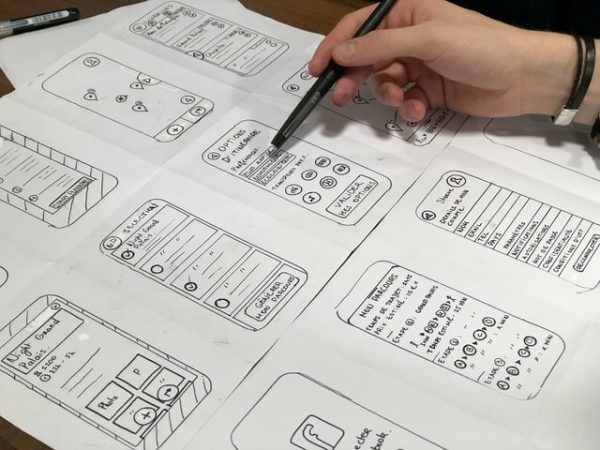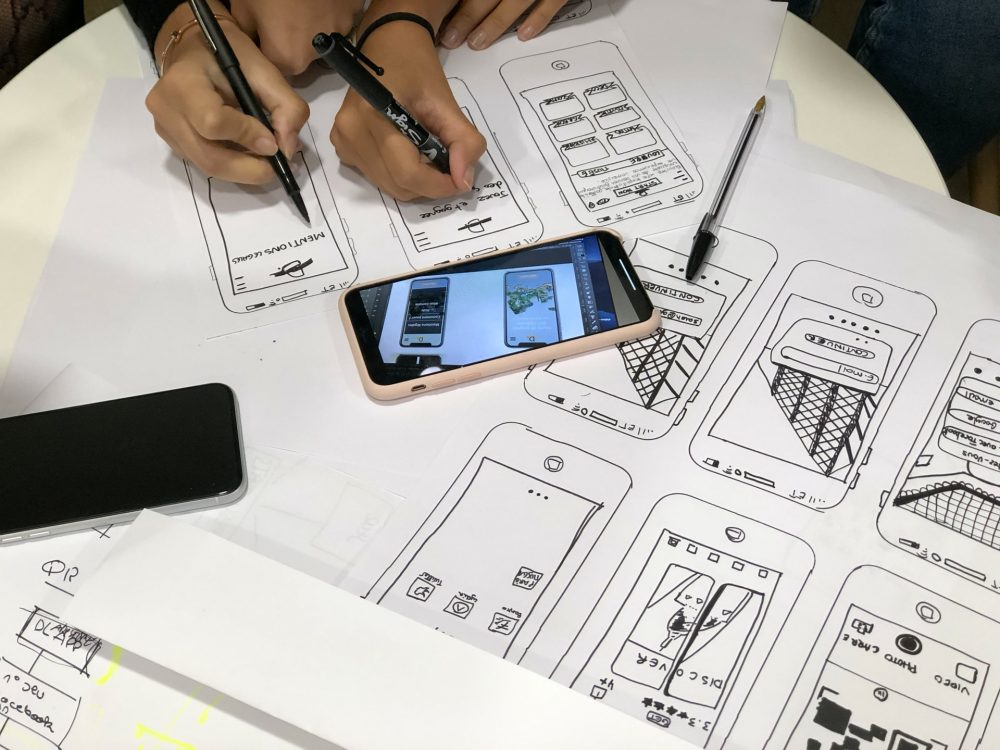It’s no secret that insights from your consumers are important for product development.
But, insights are often hard to come by because they’re not given enough importance in the overall process of product development.Companies put off testing prototypes because it is infrequent and thus reduces its effectiveness.
It doesn’t have to be this way.
In this blog post, we’ll discuss why insights from your customers matter and how you can get information regularly without spending too much time or money.
What is a prototype?
What are some of the user testing questions for your prototype?
Conclusion
What is a prototype?
A prototype is a product design that exists to test an idea.
It isn’t the final version of the product but it should be functional enough for people to interact with and give insights into how they would use or perceive your product.
Testing prototypes at regular intervals will tell you what works, what doesn’t work, where improvements are needed, whether or not what you’re doing is solving your customer’s problems.
Every product goes through stages of prototype testing but it isn’t always done on a regular or timely basis which means that insights into consumer behavior are limited and the product doesn’t evolve in the direction that consumers want to see.
If you think about traditional market research, they’re often done infrequently as the resources are assumed to be limited. This is a problem that many startups, especially early-stage ones, have to deal with daily.
If you’re going through the prototype testing phase of your product and insights aren’t being captured often enough or regularly, this will cause delays in time-to-market milestones because insights won’t come until later stages which could cause a pitfall during the product development process.
This is why it’s important to conduct insights regularly and make sure that they are done consistently throughout your entire product life cycle, not just at the prototype testing phase or pre-launch stage.
If you’re looking for insights into how consumers interact with your products in real-time scenarios, there are many different ways to capture that.
The insights of your consumers can be the key to success for your product. With insights, you will know what features need to be added and how to improve on what you already have.
This is why insights should be a key part of the product development and testing process.
Testing prototypes can often become infrequent, but if you do so in short intervals, it will have the same impact as when done regularly.
Timely insights are also needed because consumers’ insights vary across time depending on different factors such as the season or events that may have had an impact on them.
This means insights should be as fresh as possible to make sure you are creating a product that fits the lives of its consumers, rather than one they adapt their own life around.
A rapid prototype testing process will also allow for quick turnarounds and thereby reduce costs because it is not necessary to go through all stages every time insights change and also when insights are changed and insights need to be adapted.
But most importantly, insights into a product allow companies and designers alike to stay ahead of the curve when it comes to innovation. Unfortunately, insights are often delayed by companies who don’t see them as valuable or timely enough.
Then what is the point of insights if they are delayed to the point that they don’t have an impact?
The best way to ensure insights can be used for innovation is by regularly testing your prototype with consumers.
The insights you gain from these tests will help you design future iterations or even start new projects altogether.
This provides companies more opportunity to innovate, rather than just doing it at the end of the development process.
These insights may change pricing, packaging, or even future products entirely.
The more insights you get from testing and consumer engagement, the better quality decisions you’ll make moving forward with your product in a way that will create a more ‘sticky’ product for your consumer.
If we don’t get these insights quickly enough, we risk missing out on opportunities that could make or break our future innovations.
Timely human insight into your product is what will make it and its path of innovation possible.
Even though this is common knowledge, companies often delay the process of tapping into consumers’ insights, it is infrequent and thereby reduces the impact.
Testing your prototype should be a regularly phased and timely process.
As a result, it is critical to tap into insights at the right time. To ensure this happens, brands should be testing their product iteratively and timely throughout its development phase – not just before launch.
There are four phases where you can get these insights:
- Pre-prototype/pre-concept tests: This implies testing at a stage where the concepts have not been actualized in real-time yet. This gives insights into the consumer’s overall perception of an idea and can be used as a good indicator for future success or not!
- Post prototype/pre-launch tests: This is essentially testing after you have created your product, but before it has been launched on the market. After all, there is no point in launching something that may not work in the stage of a trial.
- Post-launch tests: Once your product has been launched, insights will be crucial in getting the consumer to adopt it. Getting insights after product launches is therefore very important and can make or break its success!
- Retrospective/post-market tests: This implies testing at a stage where the product has already stormed into the market successfully (or just at the breakeven point) and insights will be crucial to its future. This stage of testing is important for product line extensions or even new products that are related to the same brand umbrella. It also implies insights into your competitor’s strengths and weaknesses. These insights can direct you towards possible avenues in gaining market share over them. Or, they may just give clues on how to take the product to a more aggressive and higher league.
- A/B testing: This implies insights into the product design from the outset itself, i.e., at an early stage of prototyping or even when you have just started to sketch your ideas on paper! There is another form of ‘A/B’ testing which most companies are familiar with: this is when the test insights are implemented into two different versions of the product and tested out to see which one performs better.
In each type of testing, insights on how you can make your product more ‘user friendly’ or even improve its usability are what the insights derived from the users will help with.
This type of insight cannot be gained just by a simple feedback mechanism, because users rarely share insights that they feel are so uncomplicated.
What is needed, in this case, is an organized and systematic process of engaging the user/consumer around your product or your existing product to tap into insights which might otherwise be missed out on! This again depends upon the frequency at which you engage with them.
It is also important to make sure that the insights you gain are properly analyzed and stored for future reference.
Thereafter, this information can be compiled at regular intervals into reports which outline all insights gained over a specific period – insights about how the users/consumers used or interacted with your product! This is the determining stage of your insights into your product.
What are some of the user testing questions for your prototype?
The first step is to validate your concepts. What this means is that you need to go out and test your insights/hypotheses with real users.
The goal of this user testing is to gain insights into the product, which will guide future design decisions.
The questions that can be asked during prototype testing are:
- What was your experience like?
- How do you feel about using it with XYZ solutions and what did you dislike about the previous solutions?
- How would you improve the product if it were up to you?
- Who is the competition and how does our product compare to the competition?
- What insights would you gain from using this prototype and what new insights did we need but didn’t have before using it?

The second step is to start wireframing.
- What does that mean?
Wireframing is a term that defines the start of prototyping.
It will help you to create user paths for your prototype, which means it lays out how users are expected to go through the product before they reach any goal or insights.
- What insights would you gain from using this prototype and what new insights did we need but do not have at this point?
- What is falling short of expectations?
A wireframe is an essential part of testing your prototype. It allows you to see where users are getting stuck and what insights need further development.
Wireframing helps us anticipate the product’s path, leaving less room for user error or confusion on how they should go about using our prototypes.
Read More: User testing prototypes and wireframes with TryMyUI
The third step is to roll out a nearly ready product – the tertiary prototype which will focus on streamlining your insights, refining potential issues with design or value propositions.
This will focus on questions to make sure you’re addressing any concerns left around the concept, flow, or basic usability features.
At this stage, you should already have a product in the market which is complete with insights to guide further development.
You can start asking questions like – how are people using it? What does our user experience look like when they’re actually at work doing their jobs?
10 more essential Prototyping Questions to include in your next study
The above are just some examples of surveys based on the stage or specific need you have, to complement your study, we share with you another 10 questions that you should consider including as part of your next prototype design.
- “How intuitive was the navigation process from the home screen to your desired destination? Rate 1-5 and explain why.”
- “What frustrated you most while attempting to complete [specific task]?”
- “If you could change one feature of this prototype, what would it be and why?”
- “How does this solution compare to your current way of solving this problem?”
- “What was unclear or confusing about the interface?”
- “Rate the visual appeal of the design from 1-5. Which elements influenced your rating?”
- “Did you encounter any unexpected behaviors? Please describe them.”
- “How likely are you to recommend this product to others on a scale of 0-10? What drives that score?”
- “Which features seemed unnecessary or redundant?”
- “After using the prototype, what key functionality do you feel is missing?”
Conclusion
This way it is possible for you to turn an average performing product into a hit one – all by following insights gained through consumers’ feedback and analyzing them.
If done at regular intervals over time, this will greatly enhance your productivity as well as the insights you will gain.
This is a great way to improve your product and make it truly successful!
Your consumers are at the heart of this, so by all means listen up!
Seek them out for insights on how they use or interact with your product – be wise about undertaking prototype testing amongst many other things that may come in handy in the process.
Niraj is co-founder and Head of Engineering at Chisel Labs, a premiere agile product management software company that brings together roadmapping, team alignment, and customer connection. Niraj is passionate about building scalable infrastructure and systems and he also happens to be a huge fan of Cricket!




